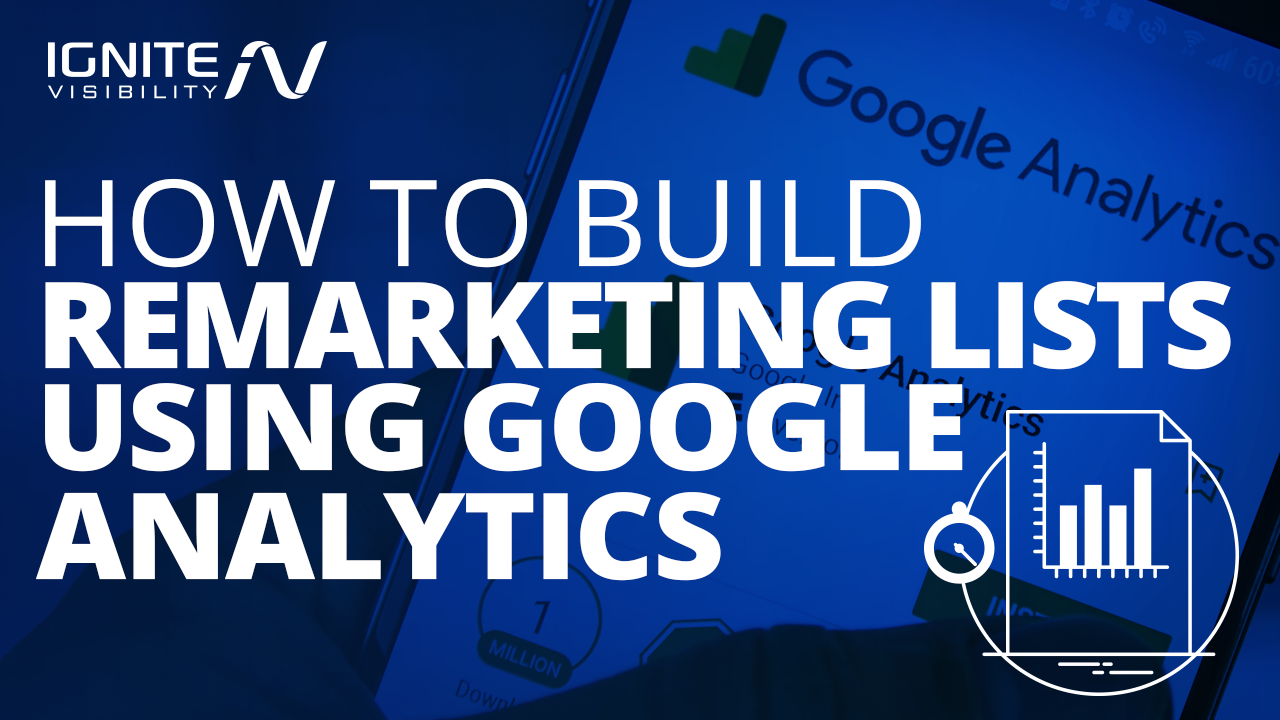A Total Overview to Remarketing In Google Analytics
A Total Overview to Remarketing In Google Analytics
Blog Article
Utilizing Remarketing in Google Analytics: A Comprehensive Overview
Harnessing remarketing in Google Analytics provides companies a tactical side in getting to out to possible consumers. This guide will certainly lose light on the important steps included in taking advantage of the full possibility of remarketing in Google Analytics, leading to enhanced advertising end results.
Understanding Remarketing in Google Analytics
Remarketing in Google Analytics permits organizations to purposefully target individuals who have formerly engaged with their web site or mobile app. By leveraging data from Google Analytics, organizations can produce personalized remarketing lists based upon customer actions, such as pages gone to, activities taken, or certain goals attained. This effective device allows services to re-engage with users that have revealed rate of interest in their product and services, eventually raising the probability of conversion.
Comprehending the various sorts of remarketing strategies is critical for a successful project - What Is “Remarketing” In Google Analytics?. Google Analytics provides numerous choices, including common remarketing, vibrant remarketing, and remarketing lists for search advertisements (RLSA) Each type serves an unique function and can be tailored to fulfill specific advertising objectives
Additionally, assessing the efficiency of remarketing campaigns is necessary for optimizing outcomes. Google Analytics gives valuable insights into the efficiency of various remarketing approaches, allowing companies to make data-driven choices and improve their targeting approach. By continuously changing and keeping an eye on remarketing initiatives based upon analytics data, services can take full advantage of ROI and drive success in their marketing initiatives.
Establishing Remarketing Campaigns

After establishing audience lists, the next action is to connect Google Analytics with Google Ads. By linking these 2 systems, companies can perfectly transfer audience checklists from Google Analytics to Google Ads for remarketing purposes. This assimilation permits for more precise targeting and better project efficiency.
When the accounts are linked, organizations can develop remarketing projects in Google Ads utilizing the audience details formerly defined in Google Analytics. These projects can be personalized with particular ad creatives, messaging, and bidding process methods to efficiently re-engage with previous visitors and drive conversions. By adhering to these steps, businesses can take advantage of the power of remarketing to enhance their advertising initiatives and enhance ROI.
Making Use Of Target Market Segmentation Methods

Predefined sections in Google Analytics permit you to quickly examine usual audience classifications like brand-new users, returning individuals, or customers who completed a certain objective on your website. Customized sections, on the various other hand, allow you to create distinct sections based upon specific requirements that are necessary to your service purposes. Dynamic remarketing checklists instantly adjust based on user behavior, revealing tailored ads to users who have engaged with your website in specific means.
Studying Remarketing Performance Metrics
Upon examining the performance of remarketing campaigns in review Google Analytics, the evaluation of crucial performance metrics provides useful insights into target market engagement and conversion rates. By diving right into metrics such as click-through rates (CTR), conversion prices, expense per purchase (CERTIFIED PUBLIC ACCOUNTANT), and return on ad spend (ROAS), marketers can assess the success of their remarketing efforts. Assessing these metrics enables marketers to enhance projects, refine audience targeting, and allot budget plans effectively to improve total remarketing performance.
Enhancing Remarketing Approaches
When refining remarketing techniques in Google Analytics, concentrating on target market segmentation is vital for attaining campaign success. By dividing your target market right into certain sectors based upon their behavior, demographics, or rate of interests, you can customize your advertisements a lot more effectively to every team. This targeted approach enhances the probability of involving users who have actually already revealed passion in your service or products, leading to higher conversion rates.
An additional essential element of enhancing remarketing approaches is constantly screening and refining your projects (What Is “Remarketing” In Google Analytics?). A/B screening various advertisement creatives, messaging, or deals can aid you recognize what reverberates best with your audience and drives the most conversions. By assessing the efficiency of these examinations in Google Analytics, you can make data-driven choices to enhance your remarketing initiatives additionally
In addition, leveraging vibrant remarketing can considerably improve your project results. This function enables you to show customized ads to users based on their previous interactions with your site, linked here showcasing product and services they have actually previously seen. By providing tailored web content to individuals based upon their behaviors and interests, vibrant remarketing can help increase interaction and drive conversions.
Final Thought
Finally, harnessing remarketing in Google Analytics is a critical technique to target individuals who have formerly involved with a website. By developing personalized audience lists and utilizing audience segmentation approaches, services can enhance remarketing campaigns for raised conversion rates. Analyzing performance metrics and constantly optimizing techniques are important for making best use of the efficiency of remarketing efforts.
Google Analytics uses various choices, including conventional remarketing, dynamic remarketing, and remarketing checklists for search advertisements (RLSA)After establishing up target market lists, the following action is to link Google Analytics with Google Ads. By connecting these 2 platforms, services can seamlessly transfer target market checklists from Google Analytics to Google Ads for remarketing objectives.Once the accounts are connected, businesses can produce remarketing projects in Google Ads using the target market lists previously defined in Google Analytics.When refining remarketing approaches in Google Analytics, focusing on audience division is extremely important for attaining project success.
Report this page